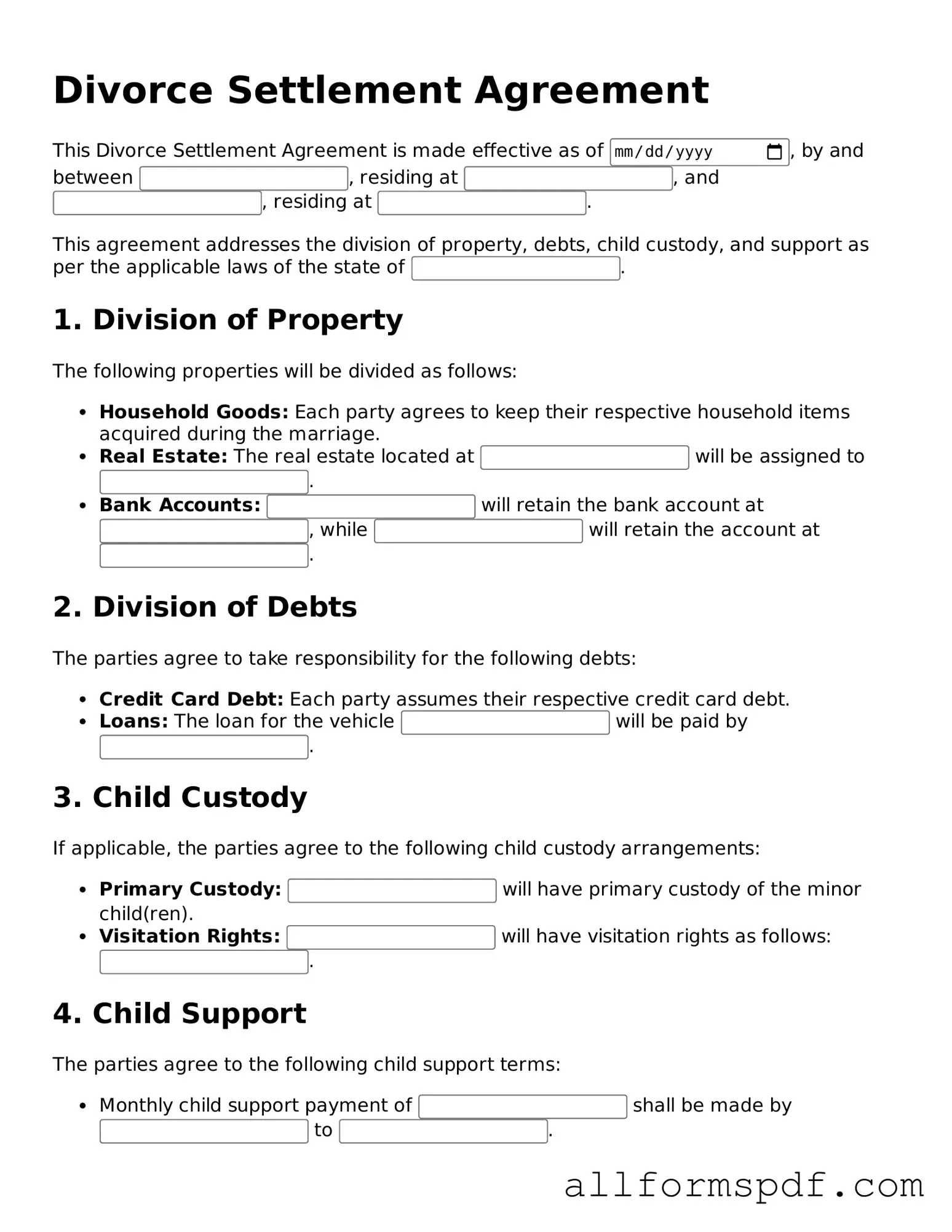Filling out a Divorce Settlement Agreement form can be a daunting task, and many people make mistakes that can lead to complications later on. One common error is failing to provide accurate personal information. It's essential to ensure that names, addresses, and other identifying details are correct. Inaccuracies can create confusion and may even delay the processing of the agreement.
Another frequent mistake involves overlooking the division of assets and debts. Some individuals may assume that everything will be split evenly without documenting specific items. This assumption can lead to disputes down the line. Clearly listing and assigning each asset and debt helps prevent misunderstandings and ensures that both parties are on the same page.
Many people also neglect to address spousal support or alimony in their agreements. Even if both parties agree that support is unnecessary, it’s vital to include a statement to that effect. Failing to do so may lead to future claims for support that could have been avoided with a clear written agreement.
In addition, not considering tax implications can be a significant oversight. Certain assets, such as retirement accounts, may have tax consequences that need to be understood and documented. Consulting with a financial advisor can provide clarity on these issues and help avoid unexpected tax burdens.
Another mistake often made is not including a detailed parenting plan when children are involved. This plan should outline custody arrangements, visitation schedules, and decision-making responsibilities. A vague or incomplete parenting plan can lead to confusion and conflict, so it’s crucial to be thorough.
Some individuals also fail to review the agreement before signing. Rushing through the process can lead to missed details or misunderstandings. Taking the time to read the document carefully ensures that all terms are clear and acceptable to both parties.
Additionally, people sometimes forget to keep copies of the signed agreement. Having a record of the finalized document is essential for future reference. It can also be useful in case any disputes arise later on.
Another common error is not seeking legal advice. While it may seem tempting to handle the process independently, consulting with a legal professional can provide valuable insights and help avoid pitfalls. An attorney can help clarify terms and ensure that all legal requirements are met.
Lastly, some individuals may underestimate the importance of being honest throughout the process. Withholding information or misrepresenting assets can lead to serious consequences, including legal penalties. Transparency is key to a fair and amicable settlement.
